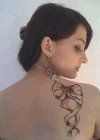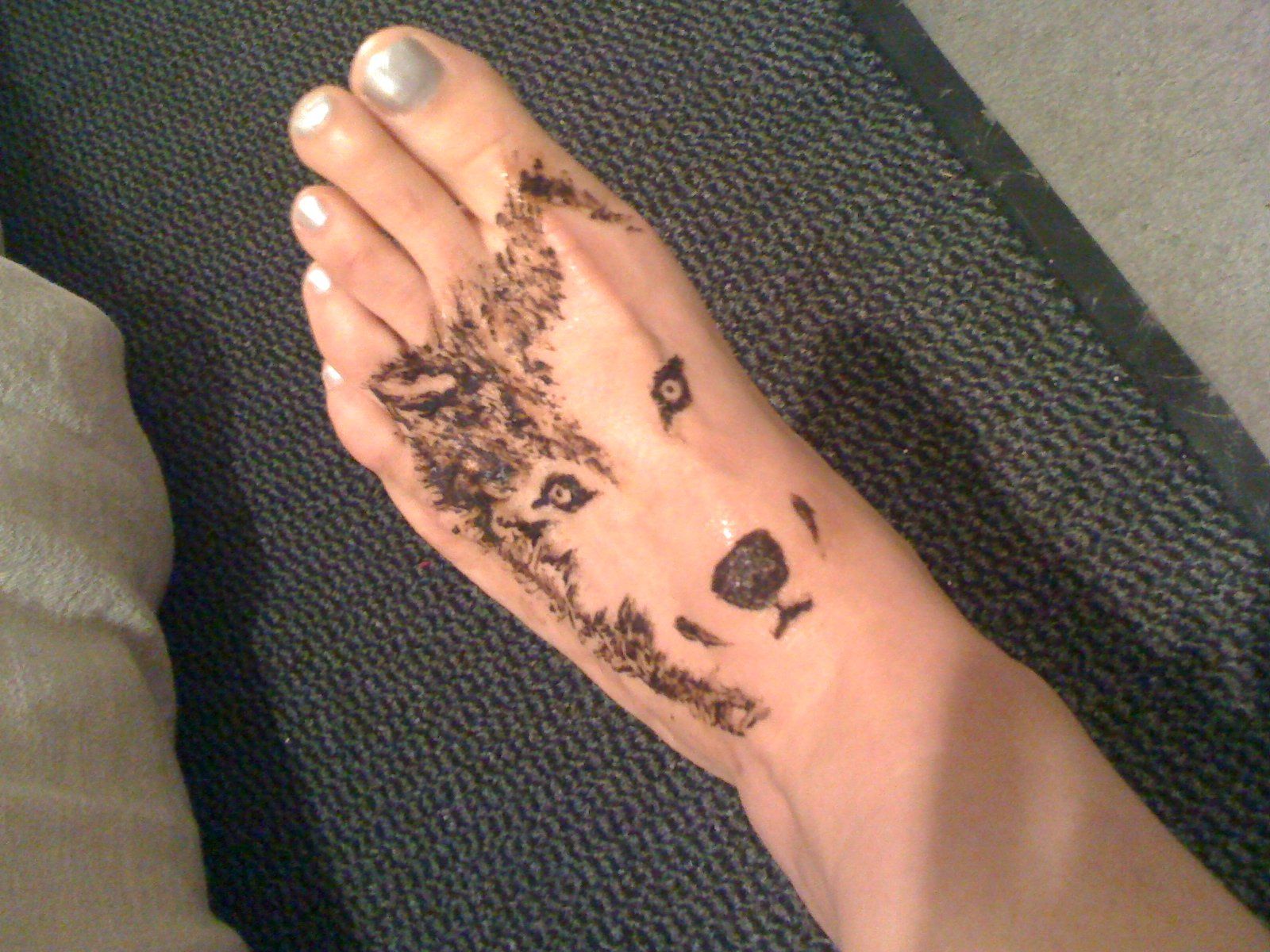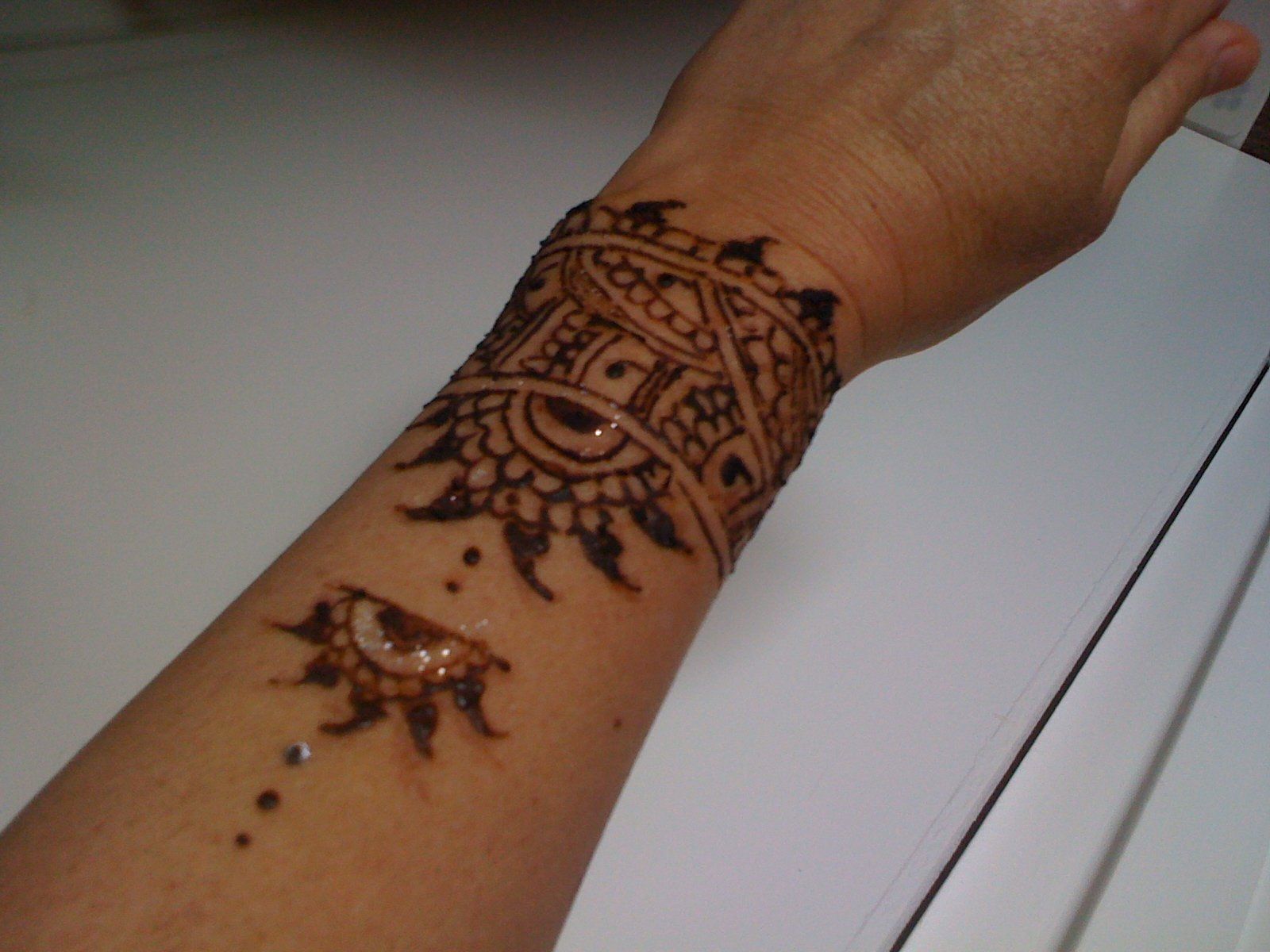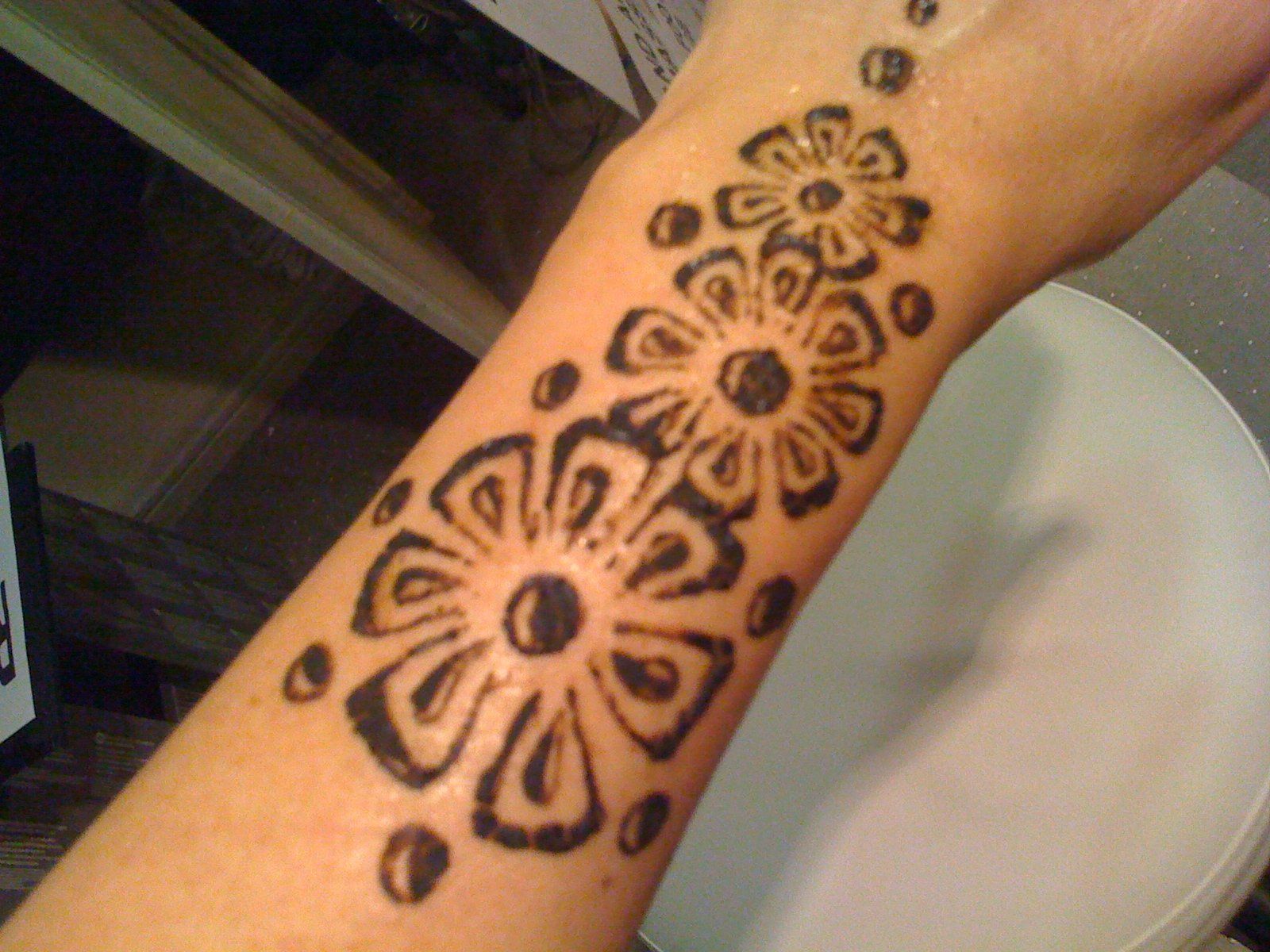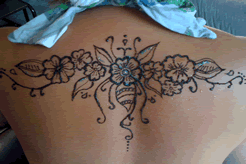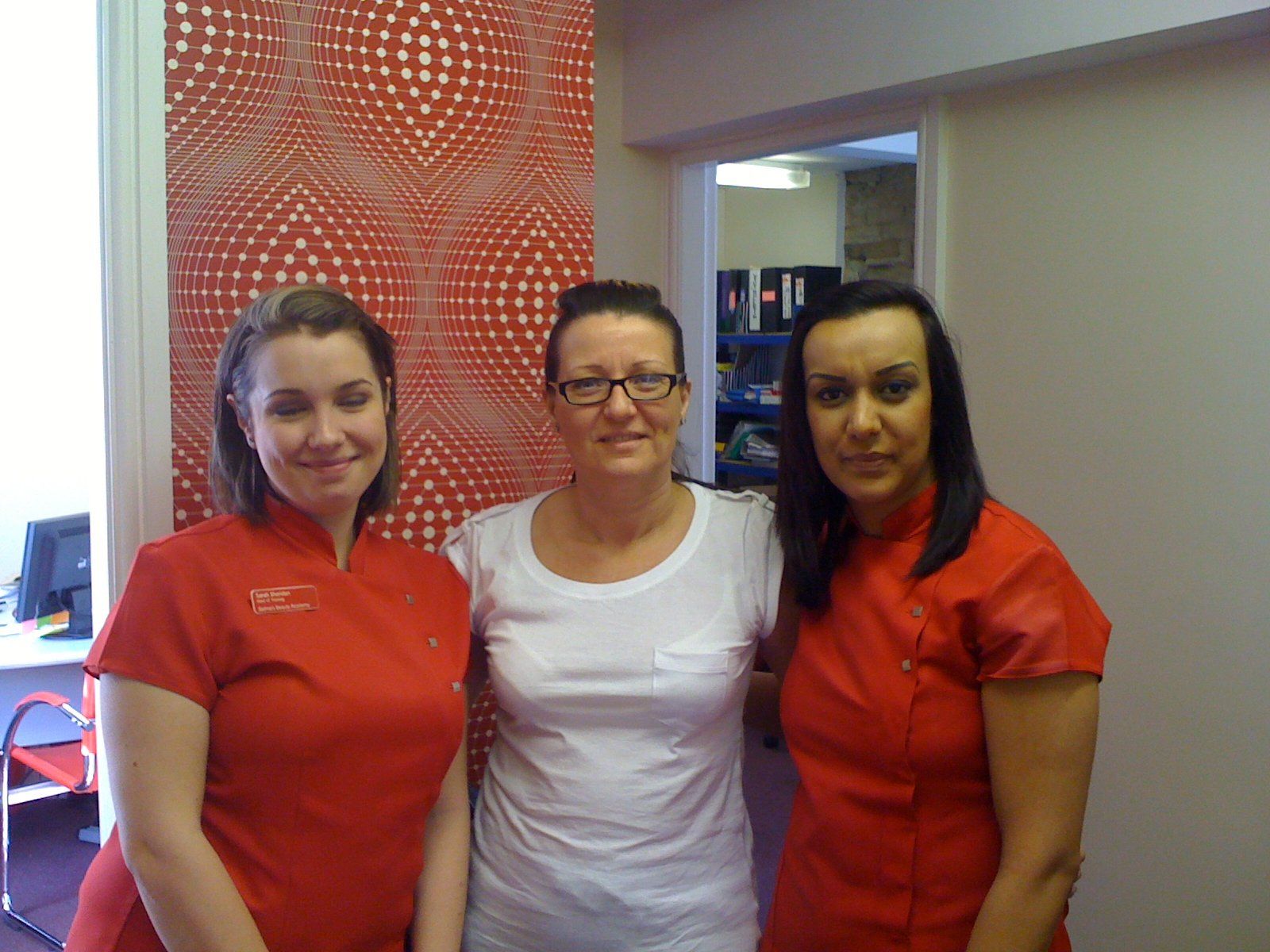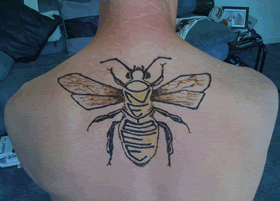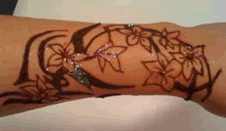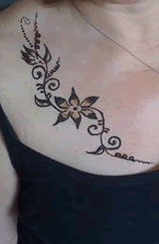HENNA
PLEASE NOTE: This is pure, natural henna. Henna is NOT BLACK in colour! Henna desribed as “BLACK” may contain PPD and is dangerous and illegal! It is a paste not an ink.
Henna paste is a brown reddish colour when applied to the skin. Henna paste has to stay on the skin for a while to make a stain. Anything painted on the skin like an ink is not henna. The hennotannic acid molecule, Lawsone, goes into your skin and stains it just the way tea from a wet tea bag goes into a tablecloth and makes a stain. The
longer the henna is on your skin, the better the stain. The henna stains develops in intensity over 24-48 hours.
Henna grows in hot climates and can be found in most Middle Eastern countries. The henna plant (Lawsonia inermis) is 8 to 10 feet high and its leaves are dried and crushed to make henna powder. The natural dyeing properties found in henna are tannins. There is some evidence to suggest Mehndi or henna body decoration, was used originally as a ceremonial art form in ancient India. Others believe it was the Moguls introduced it to Indian in the 12th Century. It has been used for 5000 years as a cosmetic and for its supposed natural healing properties. The henna bush is associated with luck and prosperity.
The varying designs can mean different things to each culture, such as good health, fertility etc. In some cultures as a substitute for jewellery. For centuries it has been used to celebrate weddings and festivals. In Pakistan, as long as her henna design lasts the new wife is granted a reprieve from household duties! Henna is associated with peace, health and happiness.
Henna tattoos are fun, painless and temporary, lasting about 10-14 days depending on where the design is on the body and how long the paste was left to set. The less exposed to soap, water and rubbing, the longer the design will last.
As with any cosmetic product, if you are unsure about sensitivity or allergic reactions to natural henna, mehndi oil (a blend of eucalyptus, clove and essential oils), the adhesive backing on stencils and bindis or body paints, you must have a patch test on the skin 24 hours before treatment. It is not recommended for children under 16 due to possible sensitivity, however parental consent can be obtained in writing for minors.
Aftercare
When taking a shower, protect arm and ankle if you can by wrapping in clingfilm with paste still on. Wear loose clothing to avoid rubbing design (24 hours), avoid smudging from 30 minutes to 2 hours after application, keep on skin as long as you can up to 24 hours after application if possible, keep dry, to remove paste scrape with vegetable/olive oil, moisturise design frequently after paste is removed, without rubbing. Cover withw water resistant oil or gel regularly and before showers, in order make the design last longer. Remember chlorine from swimming pools will bleach the design and once faded, use exfoliating scrub to remove remnants when is has nearly faded.
PLEASE NOTE: This is pure, natural henna. Henna is NOT BLACK in colour! Henna desribed as “BLACK” may contain PPD and is dangerous and illegal! It is a paste not an ink.
Henna paste is a brown reddish colour when applied to the skin. Henna paste has to stay on the skin for a while to make a stain. Anything painted on the skin like an ink is not henna. The hennotannic acid molecule, Lawsone, goes into your skin and stains it just the way tea from a wet tea bag goes into a tablecloth and makes a stain. The
longer the henna is on your skin, the better the stain. The henna stains develops in intensity over 24-48 hours.
Henna grows in hot climates and can be found in most Middle Eastern countries. The henna plant (Lawsonia inermis) is 8 to 10 feet high and its leaves are dried and crushed to make henna powder. The natural dyeing properties found in henna are tannins. There is some evidence to suggest Mehndi or henna body decoration, was used originally as a ceremonial art form in ancient India. Others believe it was the Moguls introduced it to Indian in the 12th Century. It has been used for 5000 years as a cosmetic and for its supposed natural healing properties. The henna bush is associated with luck and prosperity.
The varying designs can mean different things to each culture, such as good health, fertility etc. In some cultures as a substitute for jewellery. For centuries it has been used to celebrate weddings and festivals. In Pakistan, as long as her henna design lasts the new wife is granted a reprieve from household duties! Henna is associated with peace, health and happiness.
Henna tattoos are fun, painless and temporary, lasting about 10-14 days depending on where the design is on the body and how long the paste was left to set. The less exposed to soap, water and rubbing, the longer the design will last.
As with any cosmetic product, if you are unsure about sensitivity or allergic reactions to natural henna, mehndi oil (a blend of eucalyptus, clove and essential oils), the adhesive backing on stencils and bindis or body paints, you must have a patch test on the skin 24 hours before treatment. It is not recommended for children under 16 due to possible sensitivity, however parental consent can be obtained in writing for minors.
Aftercare
When taking a shower, protect arm and ankle if you can by wrapping in clingfilm with paste still on. Wear loose clothing to avoid rubbing design (24 hours), avoid smudging from 30 minutes to 2 hours after application, keep on skin as long as you can up to 24 hours after application if possible, keep dry, to remove paste scrape with vegetable/olive oil, moisturise design frequently after paste is removed, without rubbing. Cover withw water resistant oil or gel regularly and before showers, in order make the design last longer. Remember chlorine from swimming pools will bleach the design and once faded, use exfoliating scrub to remove remnants when is has nearly faded.

